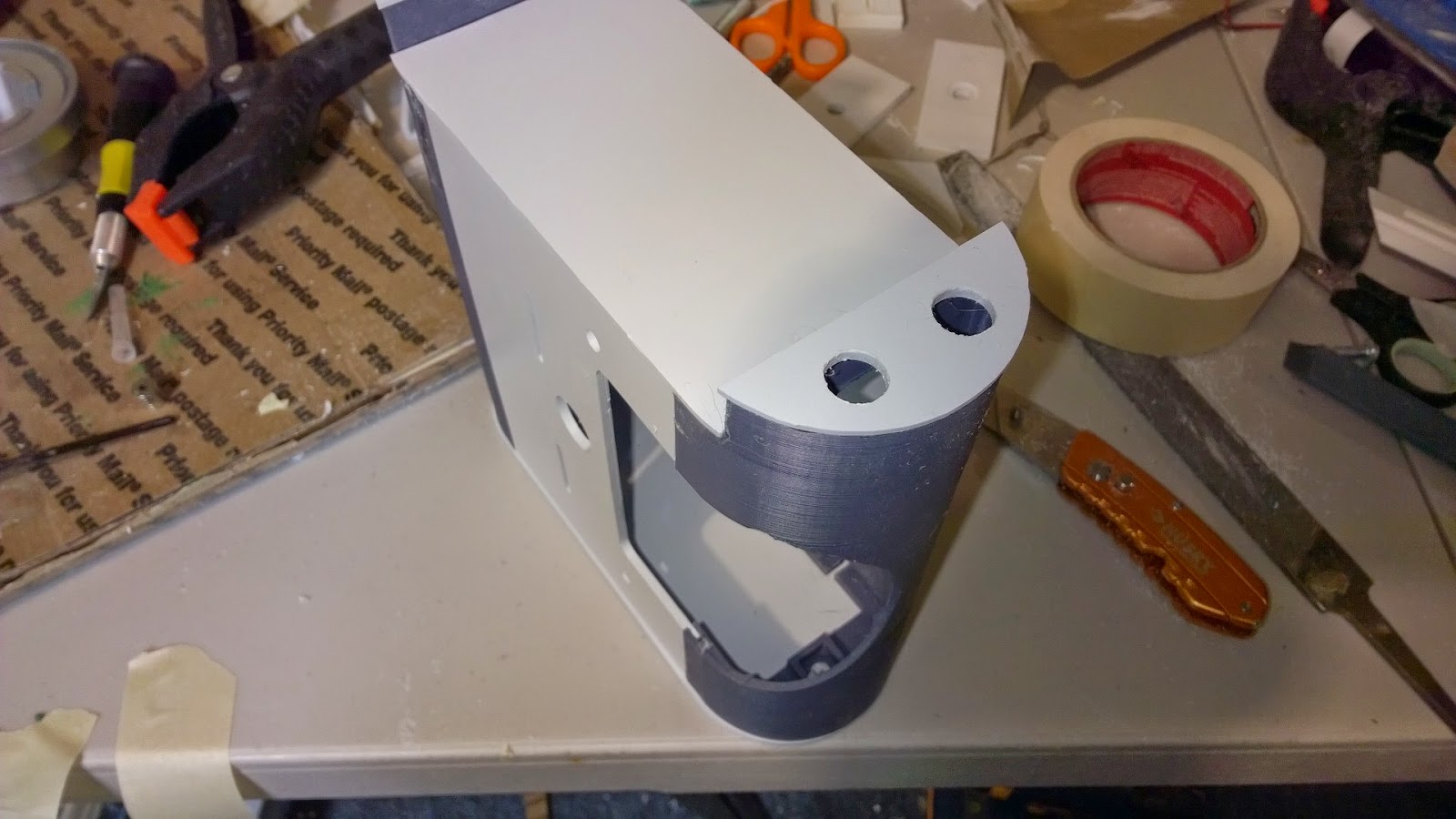Center Vent Holder
Center vent area on the frame was nothing more than an open slot on the front of the frame. Frank Pirz design probably relies on the outer skin to hold the pieces in place. Since I am working on a more mechanical version of this R2 unit... I wanted to start building these inserts to support the pieces so I can add/remove them as needed.
Above you can see where the slot opening is where the vents would sit... the below illustration shows where they would be placed on the R2 unit.
Since this would require some sort of insert, I got to work on a box kit that fit tightly into the R2 center slot opening where the vents would be.
I measures the rounds and depth of the inserts on the frame and then proceeded to cut out my pieces. I will use 2 tiers,,, one each to hold the vent opening.
Once you drew the lines, a few scores with the exacto knife over the same spot, you can then snap the plastic piece perfectly.
The tracing of the insides and shape of the opening on the frame...These rounds will be more difficult to cut since I didn't have my router setup.
Not bad... I cut them out by hand using the first piece and then tracing the knife along the edges.
Using Weld-on 16 I was able to connect the pieces with enough time to adjust before the glue hardened
Here is the final piece... ready for insert.
Fits snug and perfectly! I will add a center vent to test as well...
Perfect, ok now to apply the skins to see where the placement of the vent holes are in relation to the skin/frame.
NOTE: will need to do the same for the mechanical arms on the front as well.

































































